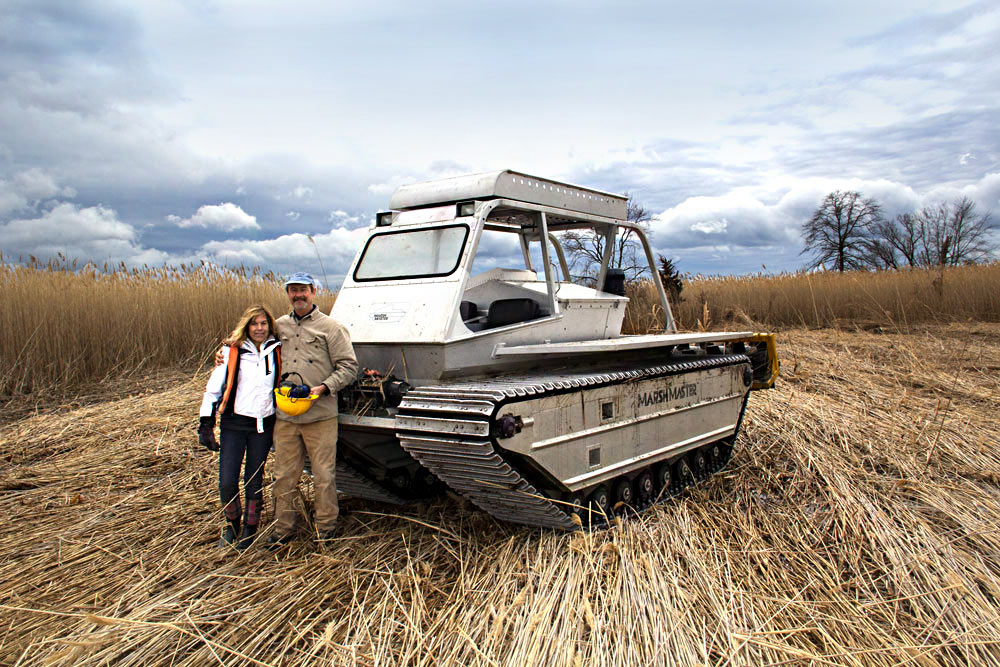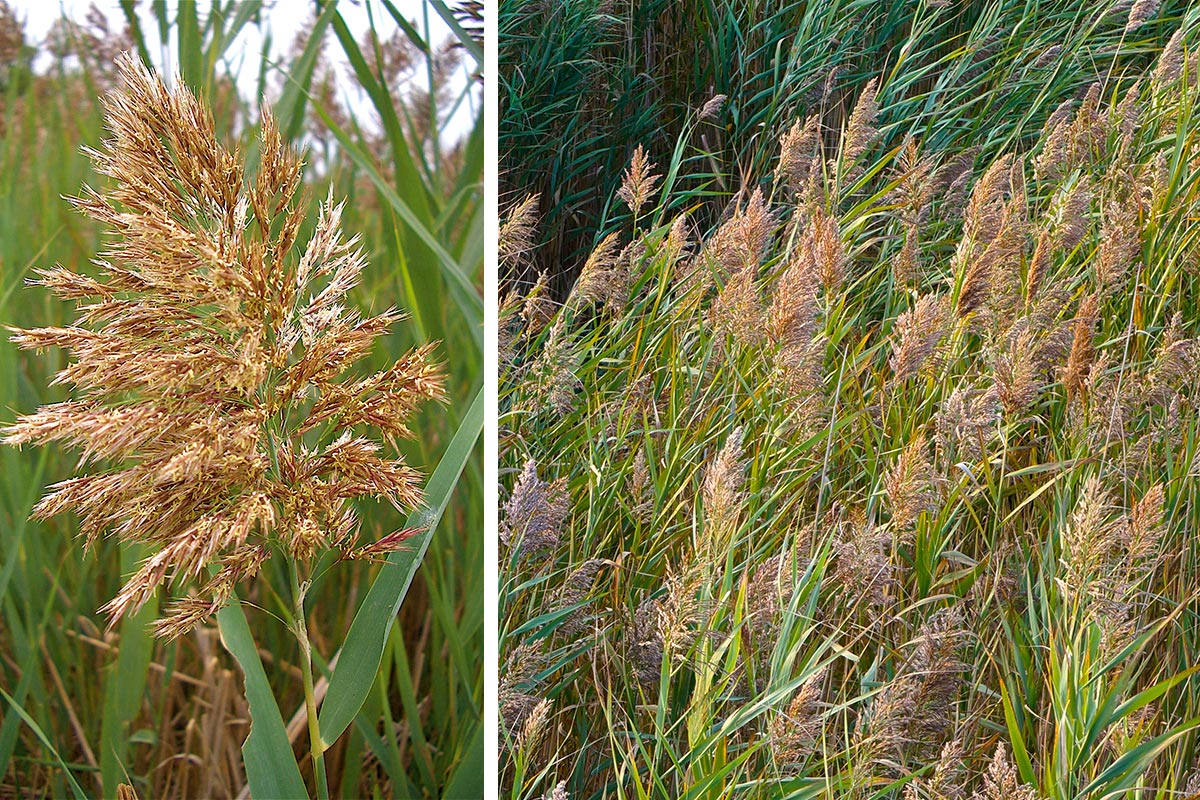Coonservation & Development
Control of Invasive Plants In and Along the River
Phragmites, Judy Preston
In January 2020, the State of Connecticut began collecting an Aquatic Invasive Species Stamp fee from anyone who registers or renews a registration of a boat, vessel, or jet ski in Connecticut.
Boaters with out-of-state registrations who boat on Connecticut inland waters will also be required to pay this fee. Monies collected go into the Connecticut Lakes, Rivers, and Ponds Preservation account for grants that support the restoration and rehabilitation of lakes, rivers, and ponds.
The legislature in 2022 established an Office of Aquatic Invasive Species within the Connecticut Agricultural Experiment Station.

Gateway Commission Activity
From 2016 to 2018, the Commission successfully partnered with the US Fish and Wildlife Service, the CT Department of Energy and Environmental Protection, The Nature Conservancy and private citizens to rid Ely’s Marsh in Lyme of extensive stands of invasive Phragmites.
In 2018, the Gateway Commission provided a grant of $20,000 to assist in the surveying of invasive in-water invasive plants in the Zone to identify where they are growing. This survey has led to important baseline information that will be used as the efforts to learn how to control and eradicate these invasive plants moves forward.
Resource Information

Hydrilla and Aquatic Invasive Plants »
Surveying invasives and a short video outlining the scope of Connecticut’s hydrilla problem.

A successful collaborative effort to rid tidal marshes of invasive Phragmites.

Recognizing non-native Phragmites and advice on its control from the Connecticut Agricultural Experiment Station.

Advice from the CT Department of Energy and Environmental Protection on best practices with links to educational resources

Water Chestnuts in the Connecticut River »
Fact sheet and video from the Connecticut River Conservancy.

How to Easily Recognize the Zone
The “Conservation Zone” — the area in 8 towns precisely defined in state law as where the Gateway Commission preserves the “natural and traditional river scene” — can be identified in simpler terms. It is that visible area you can see if you’re on the river in a boat or looking across the river from the opposite shore.
